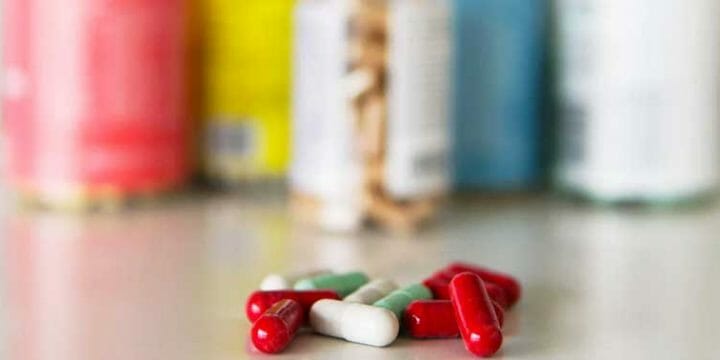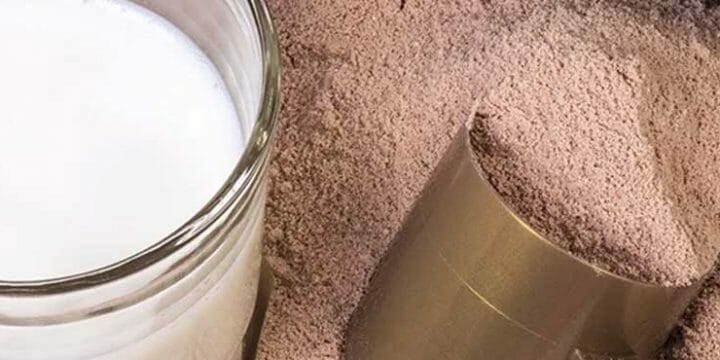Testosterone, primarily a male sex hormone, plays a vital role in both men and women for producing energy, generating muscle mass, controlling and regulating sex drive, and for men, regulating sperm production.
Throughout my career as a certified personal trainer, I’ve regularly monitored my own testosterone levels alongside my clients'. I've personally experienced how these levels closely correlate with age and directly impact performance and overall well-being.
In this article, we’re going to look at what those levels are, their implications, and what you can do to boost your testosterone levels.
Quick Summary
- The average testosterone levels for men by age are as follows: (10-15 years: 1-320ng/dl) (20-39 years: 400-1080ng/dl) (40-59 years: 350-890ng/dl), and for women, the average testosterone levels are as follows: (7-9 years: 1-12ng/dl) (10-premenopausal years:2-53ng/dl) (postmenopausal: 7-40ng/dl).
- High testosterone levels in women can cause irregular periods, abnormal sexual function, excessive hair growth, and polycystic ovary syndrome.
- According to the laboratory tests and diagnostic procedures, for men, testosterone levels peak at around 20 years of age, with levels ranging from 400 to 1080 ng/dL, then gradually decline with age.
- From my experience as a fitness professional, maintaining balanced testosterone levels is crucial for overall health, and lifestyle choices play a significant role in this.
Average Testosterone Levels by Age

Average T-levels differ between the sexes and the ages. Females usually have lower levels of testosterone than their male counterparts, and elderly folks tend to have lower testosterone levels than young adults and middle-aged people.
T-levels measured are of two kinds: bound testosterone and free (unbound) testosterone. About 98% of what your body produces is bound to either albumin or sex hormone-binding globulin (SHBG), which is why it's called “bound” testosterone.
Free testosterone is the remaining 2%, and it connects with the testosterone receptors of the body's cells. According to an article from the Mayo Clinic Labs website, it's responsible for secondary male sexual characteristics such as facial hair and a deeper voice [1].
T-level measurements are either free or total, where the latter measures the cumulative amount of both bound and unbound testosterone in the body.
The information given below is regarding total testosterone.
Male Testosterone Levels by Age
Below are the typical testosterone levels for men in different age groups [2]. The total testosterone level for males reaches its peak at the age of 20.
Children
- 7–9 years: 0–8 nanograms per deciliter
Adolescents Age Male
- 10–15 years: 1–320 ng/dL
- 16–19 years: 200–1080 ng/dL
Adult Males
- 20–39 years: 400–1080 ng/dL
- 40–59 years: 350–890 ng/dL
- Over 60: 350–720 ng/dL
Female Testosterone Levels
- 7–9 years: 1–12 ng/dL
- 10–premenopausal years: 2–53 ng/dL
- Postmenopausal: 7–40 ng/dL
High Testosterone Levels in Men and Women

Usually, high levels of testosterone in both men and women are found in those who maintain a healthy lifestyle.
In my personal journey and research, I've encountered the risks of excessively high testosterone, particularly among athletes I've trained with who used steroids for enhanced performance. This firsthand experience highlighted the delicate balance needed in testosterone levels.
Men High T-Levels
According to an article found on the Harvard Health Publishing website, men with abnormally high T-levels can experience the following symptoms: headaches, acne, high libido, infertility, high blood pressure, excessive body hair, heart disease, and metabolic disorders, among many others [3].
High testosterone levels in men can also signify a tumor in the adrenal glands or testicles [4].
Related: How Much Testosterone Does A Man Produce Per Day
Women High T-Levels
In women, ovaries produce testosterone, and most testosterone is converted to the sex hormone estradiol [5].
Abnormally high T-levels in women can cause:
- Irregular periods
- Polycystic ovary syndrome
- A deeper voice and excessive hair growth
- Abnormal sexual function
- Weight gain
High T-levels in women can also affect their fertility, whereas maintaining regular levels help enhance it [6].
Low Testosterone Levels in Men and Women

As overall hormone levels usually decline with age, average testosterone levels decrease as well - both for men and women.
Men
Men may experience an increased risk of fractures, weak bones, low libido, loss of body hair, hot flashes, increased breast size, and reduced muscle mass, among many other symptoms of low testosterone [7].
Also, low T-levels in men may mean a genetic or chronic disease or a problem with the pituitary gland [8].
“Testosterone to me is so important for a sense of well-being when you get older.”
- Sylvester Stallone, Celebrated American Actor
Women
Although testosterone is primarily considered a male hormone, women who suffer from testosterone deficiency experience the following negative effects:
- Fatigue
- Fertility issues
- Obesity
- Drying skin
- Hair loss
- Decrease in bone density
- Low libido
- Mood changes
- Irregular menstrual cycle
- Sleep problems
- Reduced muscle tone
Testing and Diagnosis
T-Levels can be assessed with a blood test.
If you notice any of the symptoms mentioned above, you should consider checking your testosterone level.
To diagnose low testosterone, visit your doctor for a blood test and assess what you need to do to boost your T-levels to normal.
Keep in mind that testosterone levels vary throughout the day.
Since the levels are generally highest in the morning, you will most likely want to do the blood test as soon as you wake up.
In case you have low T, a doctor will provide medical advice on overcoming the deficiency.
You may even have to consider hormone therapy in certain circumstances.
How To Increase Testosterone Levels?

To increase low testosterone, you need to make a few healthy lifestyle changes.
1. Good Night’s Rest
A good portion of testosterone release in men happens during sleep [9].
Every additional hour of quality sleep increases your T-levels.
I suggest getting between 8–10 hours of quality sleep.
2. Regular Exercise
Peer-reviewed studies indicate that regular exercise increases T-levels [10].
Some of the best types of workouts are HIIT Training, resistance training, and weight training.
3. Balanced Diet
Through both my own dietary experiments and analyzing the lab results of numerous clients, I've discovered the effectiveness of a diet rich in protein, moderate in complex carbs, and good fats in boosting overall serum testosterone levels.
Foods such as avocados, eggs, berries, shellfish, fish, and green leafy vegetables also correlated with the maintenance or an increase in T-levels in some of my clients.
4. Testosterone Replacement Therapy
Testosterone Replacement Therapy (TRT) may be a solution for those suffering from the symptoms of low testosterone. Testosterone therapy involves the delivery of extra testosterone in the body to raise and keep the levels within the normal range.
I highly recommend that you consult your doctor before doing any hormone replacement therapy — especially testosterone therapy.
A great natural way of raising T levels is with the help of testosterone boosters. Check out our tested list of testosterone boosters in this articles:
FAQs
What Is a Good Level of Testosterone?
A good level of testosterone, as per the American Urological Association, is at least 300 ng/L in males [11]. Any adult male with testosterone less than 300 ng/dL should visit a doctor for suggestions and recommendations on improving testosterone levels to the normal range.
How to Test Your Testosterone Levels?
You can test your testosterone levels through a blood test. Keep in mind that testosterone levels vary throughout the day. Since the levels are generally highest in the morning, you will most likely want to do the blood test as soon as you wake up.
How Do Lifestyle Factors Impact Testosterone Levels Across Different Ages?
Lifestyle choices such as diet, physical activity, stress management, and sleep quality can significantly influence testosterone levels. A balanced diet, regular exercise, stress reduction, and adequate sleep are crucial for maintaining optimal testosterone levels at any age.
What Is the Relationship Between Testosterone Levels and Chronic Diseases?
Lower testosterone levels have been linked to an increased risk of chronic diseases like type 2 diabetes, cardiovascular diseases, and metabolic syndrome. Regular monitoring of testosterone levels can help in the early detection and management of these health conditions.
How Do Genetic Factors Influence Testosterone Levels?
Genetic predispositions play a significant role in determining an individual's testosterone levels, with variations observed among different ethnic groups. Understanding these genetic influences can aid in personalized healthcare and hormone management strategies.
Can Environmental Toxins Affect Testosterone Production and Regulation?
Exposure to certain environmental toxins and chemicals can adversely affect testosterone production and hormonal balance. It's important to be aware of these environmental factors and minimize exposure to maintain healthy testosterone levels.
What Are the Psychological and Cognitive Effects of Testosterone Fluctuations?
Fluctuations in testosterone levels can impact mental health, affecting mood, cognitive function, and overall psychological well-being. Maintaining balanced testosterone levels is essential for mental clarity, emotional stability, and cognitive health.
References:
- https://www.mayocliniclabs.com/test-catalog/overview/83686#Clinical-and-Interpretive
- Chernecky CC, Berger BJ (31 October 2012). Laboratory Tests and Diagnostic Procedures – E-Book. Elsevier Health Sciences. pp. 1059–1062. ISBN 978-1-4557-4502-9.
- https://www.health.harvard.edu/staying-healthy/testosterone--what-it-does-and-doesnt-do
- https://www.karger.com/Article/Abstract/282841
- https://flo.health/menstrual-cycle/health/symptoms-and-diseases/high-testosterone-in-women
- https://www.ncbi.nlm.nih.gov/pmc/articles/PMC6486327/
- https://www.health.harvard.edu/staying-healthy/testosterone--what-it-does-and-doesnt-do
- https://medlineplus.gov/lab-tests/testosterone-levels-test/
- https://www.ncbi.nlm.nih.gov/pmc/articles/PMC4445839/
- https://pubmed.ncbi.nlm.nih.gov/22234399/
- https://www.auanet.org/guidelines-and-quality/guidelines/testosterone-deficiency-guideline
About The Author
You May Also Like






